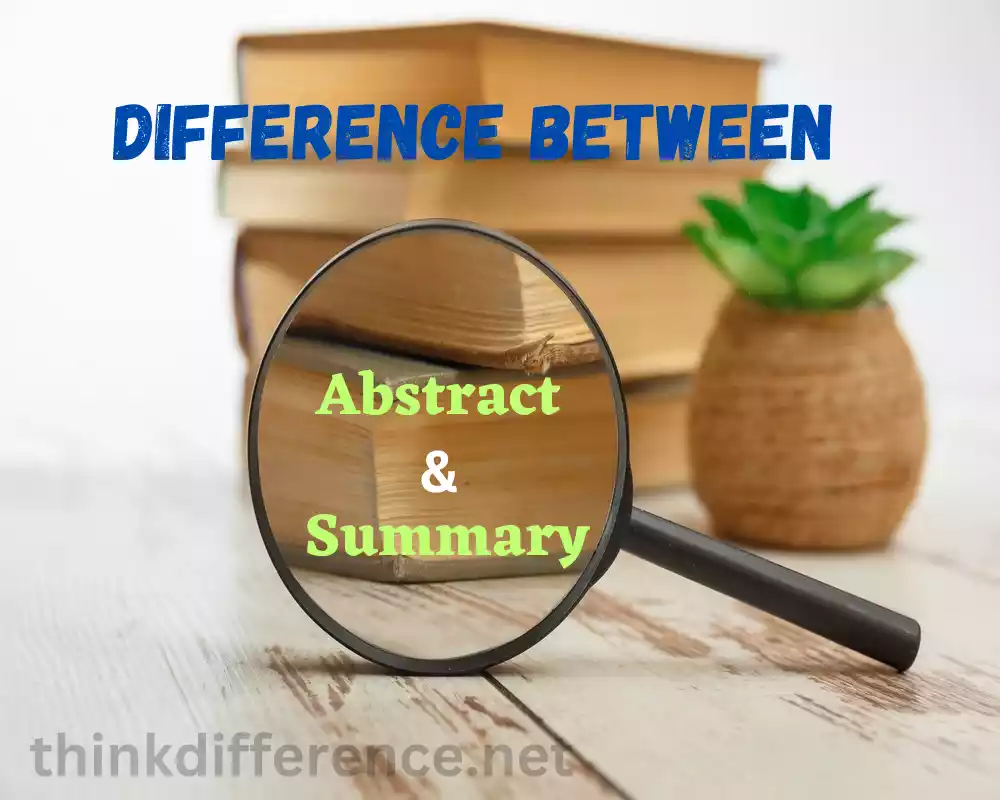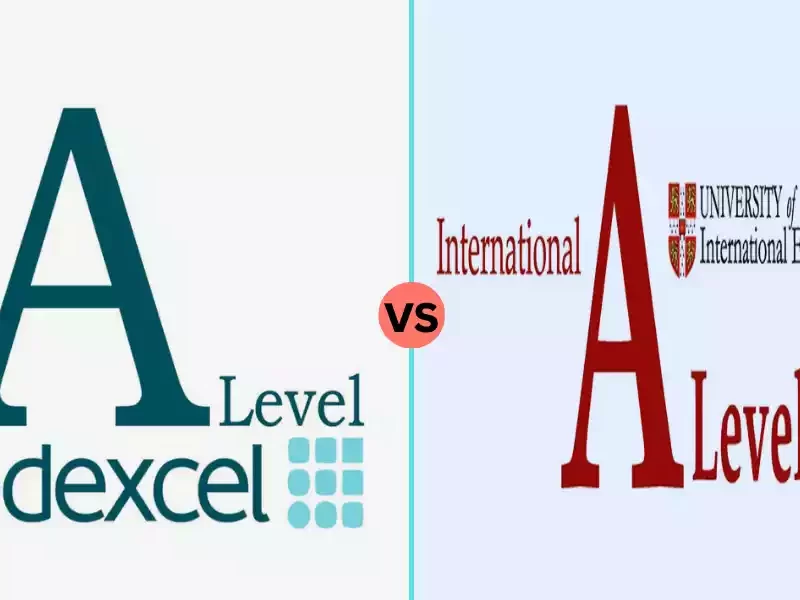Abstract and Summary can play an invaluable role in communicating the core of any document – be it an article, research paper, or report. They offer readers a quick snapshot of major details and results so they can assess whether this entire information meets their needs or not. In this article, we’ll look at their differences, learn to write efficient summaries/abstracts as well as explore what makes up their elements.
What is an Abstract?
Abstracts are condensed versions of longer documents such as research papers or theses that allow readers to quickly gain an overview of major elements, arguments, findings and conclusions in an original text without reading all of it themselves.
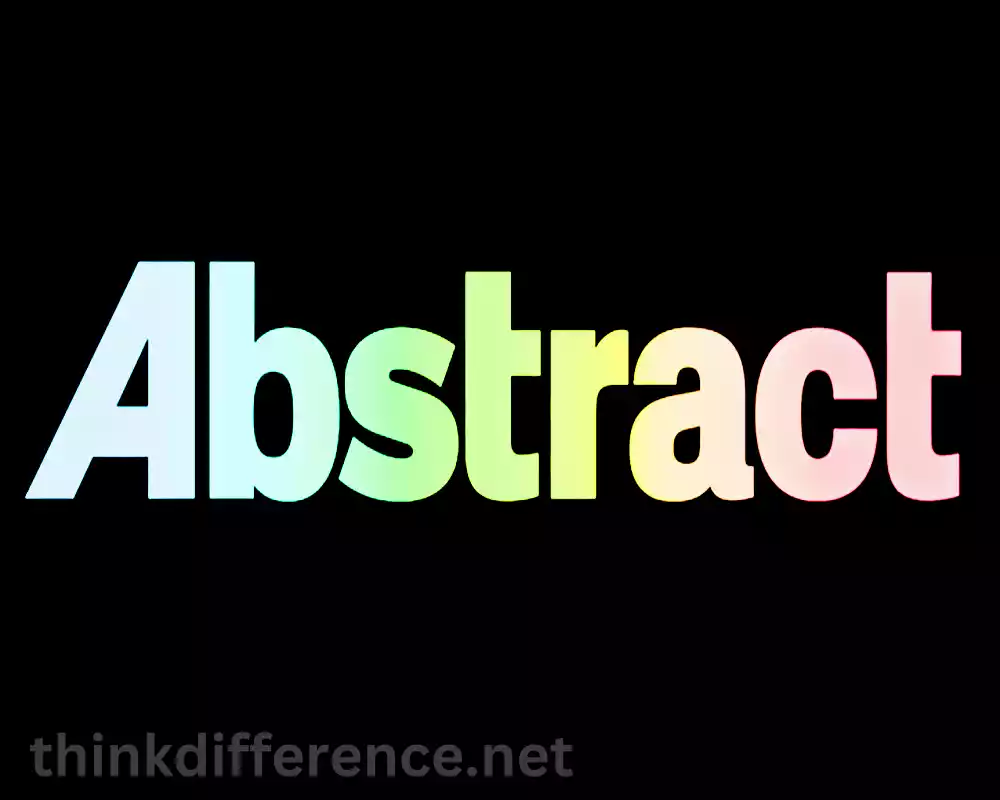
Abstracts help people quickly determine whether further study would be worthwhile by giving readers an outline of major ideas from each original document without reading its entirety first. Their purpose is also to help determine whether certain topics deserve further examination by readers who might encounter them by providing quick summary summaries such as abstracts.
Abstracts are commonly employed in scientific, academic professional and academic contexts. Usually appearing at the beginning of documents before any main text begins to unfold, abstracts should be written as stand-in pieces which remain readable and informative even when read independently of its rest of content.
Abstract length may depend upon the specifications or guidelines for any particular field or publication, with average abstracts typically falling somewhere between one or two sentences to an entire paragraph or two in length. Abstracts must be clear, concise, condensed and emphasize key aspects of text without excessive detail. They frequently follow an organized format which includes sections such as background techniques, methods results and conclusions, depending on what document type needs an abstract.
Abstracts play an indispensable role in aiding information retrieval and decision-making by helping readers quickly assess its significance before diving in deeper to read an entire document.
What is a Summary?
Summaries can be defined as short versions of larger texts such as articles, books or speeches in which key ideas, elements and essential details from them have been reduced down into simpler form for easier consumption. Contrasting with abstracts which often only present certain parts of an entire work in summary form.
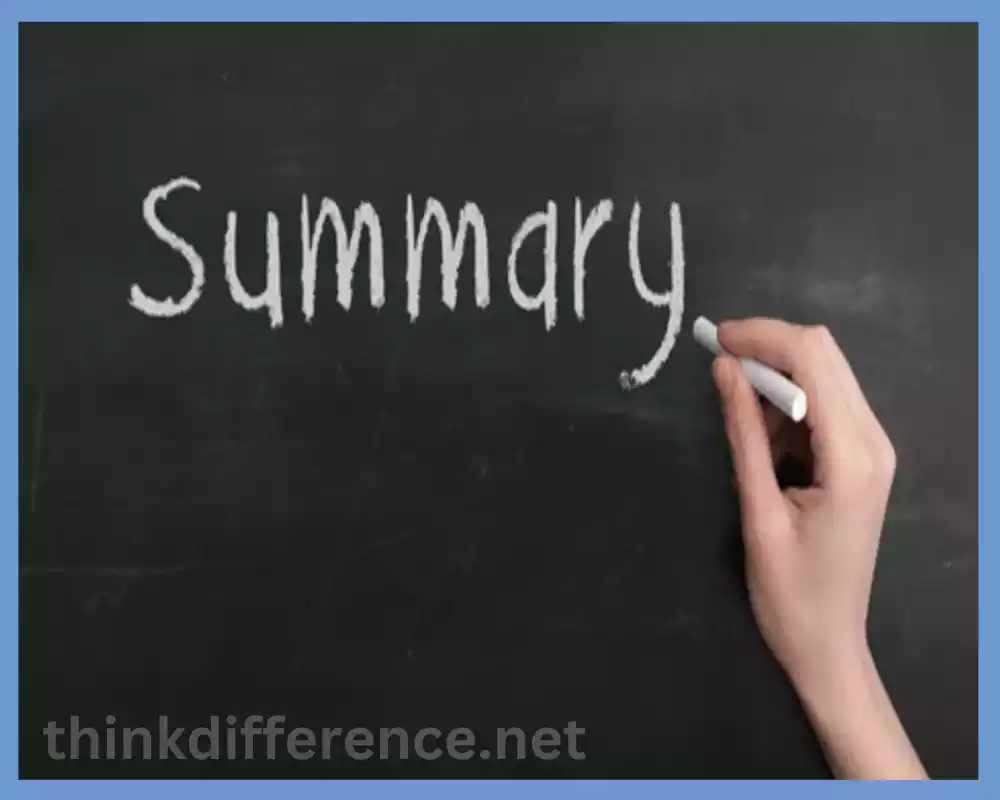
An overview is designed to provide readers with a brief summary of an original document’s key arguments and content, providing readers with enough context and understanding without reading all the text themselves. Summaries may be employed in numerous contexts including literature reviews academic papers executive briefs business reports book reviews etc.
An effective summary encapsulates all the details found in an original text while maintaining its fundamental message. A well-written summary should convey principal ideas, supporting arguments and any relevant details while eliminating superfluous details and examples that are unnecessary for understanding or context. Depending on its intent or context it could include further discussion, interpretation or analysis of its entirety.
Summaries vary in terms of length depending on individual needs and guidelines provided typically shorter than their original text itself and should aim at maintaining clarity, coherence and accuracy while staying away from personal bias and opinions when writing summaries.
Summary in general means providing an outline of key concepts and points from an extensive text to aid reader understanding without needing to read every line individually.
Importance of understanding the difference between abstract and summary
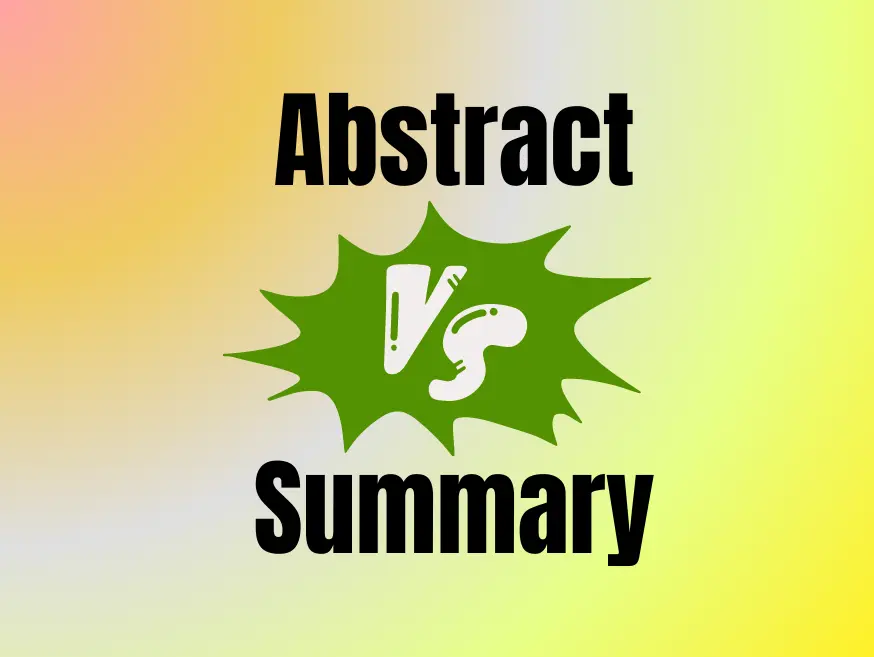
Understanding the difference between abstract and summary is important for several reasons:
- Information Retrieval: Abstracts and summaries help readers quickly assess the relevance and significance of a document before investing time in reading the full text. Knowing whether you need a brief overview (summary) or a comprehensive understanding (abstract) can save time and aid in efficient information retrieval.
- Academic and Professional Writing: In academic and professional settings, abstracts and summaries are commonly required for research papers, articles, proposals and reports. Knowing how to effectively write each type of summary helps convey key points, findings and conclusions accurately to different audiences.
- Writing Skills: Understanding the nuances of abstracts and summaries improves overall writing skills. It requires the ability to condense and communicate complex ideas concisely and accurately, which is a valuable skill in various fields and professions.
- Communication and Presentation: Abstracts or summaries of research results are frequently employed during conferences to present or outline results from projects or investigations conducted over time. Knowing when to use an abstract or a summary helps presenters effectively convey key information to an audience within a limited timeframe.
- Decision-Making: Abstracts and summaries aid decision-making processes. Decision-makers, such as journal editors, funding agencies or business executives, often rely on abstracts and summaries to evaluate the value and relevance of a document or project before making informed decisions.
- Research and Literature Review: Researchers and students conducting literature reviews rely on abstracts and summaries to quickly assess the relevance and quality of published works. Understanding the differences helps in selecting relevant sources and extracting key information efficiently.
- Critical Analysis: Differentiating between abstracts and summaries enhances critical analysis skills. By understanding how information is distilled and presented, readers can evaluate the accuracy, bias and completeness of abstracts and summaries compared to the original text.
Comprehending the distinction between abstracts and summaries enhances reading, writing, and critical thinking abilities. It allows for effective communication, efficient information retrieval and informed decision-making in various academic, professional and research contexts.
Components of an Abstract
The components of an abstract can vary depending on the requirements and guidelines of the specific field or publication. A typical abstract generally includes the following components:
- Background or Introduction: This section presents brief background or context information regarding the subject or topic of research or paper, in order to convey its significance and purpose.
- Objectives or Purpose: The objectives or purpose of the study are stated clearly in this section. It highlights the specific goals or aims of the research or document.
- Methods or Approach: This component briefly outlines the methods or approach used to conduct the study or develop the document. Information should also include details regarding research plan techniques for data collection and experimental techniques as well as theoretical frameworks pertaining to your specific study.
- Results or Findings: In this section, the key findings and/or conclusions of your study are presented and summarized. It highlights the most important outcomes or discoveries of the research or document.
- Conclusion or Implications: This section gives a concise account of the major findings or implications from this investigation. It may discuss the significance, relevance or potential applications of the findings or ideas presented in the document.
It’s important to note that not all abstracts follow this exact structure. Depending on the discipline or publication, abstracts may have a more structured format with specific headings or they may be more narrative and descriptive. Abstract length can differ considerably, from just a few sentences up to an entire paragraph or even full page, depending on specifications.
Writing abstracts requires being careful that they are clear, straightforward and focused on communicating only what’s essential about their text. Readers must have enough information in the abstract so they can comprehend key points and decide whether further investigation of its entirety warrants further exploration.
Components of a Summary
The components of a summary can vary depending on the length and complexity of the original text, as well as the specific purpose and guidelines provided. A summary typically includes the following components:
- Introduction: Introduction provides information regarding the text’s source material including author name and title as well as any relevant sources or references that were utilized during creation of text. It sets the stage for the summary and provides a brief overview of the main subject or topic.
- Main Ideas: The main ideas are the central concepts or arguments presented in the original text. The summary should identify and capture these key points accurately and concisely. Dependent upon its length and nature, summaries may cover all principal ideas or focus solely on those most essential.
- Supporting Details: Supporting details are specific pieces of evidence, examples or explanations that reinforce the main ideas in the original text. In a summary, these details are often condensed or omitted but some relevant and significant details may be included to provide context or strengthen the understanding of the main ideas.
- Structure and Organization: The summary should reflect the structure and organization of the original text, presenting the main ideas and supporting details in a logical and coherent manner. Depending on the length of the summary, this may involve grouping related ideas or concepts together and presenting them in a clear and organized manner.
- Conclusion: Summary conclusions provide a succinct summarization of key results or arguments present in a source text. It should capture the essence of the original text’s message and provide a sense of closure to the summary.
Be mindful that both the length and level of detail in a summary may differ significantly, from short paragraphs or sentences providing a quick snapshot, to longer summaries spanning multiple pages that provide a thorough outline.
When writing a summary, it is crucial to remain objective and avoid personal biases or opinions. The summary should accurately represent the main ideas and key points of the original text while maintaining clarity and coherence.
Differences Between Abstract and Summary
The primary differences between an abstract and an overview include:
- Purpose: Abstracts’ purpose is to present a short yet comprehensive summary of a larger work, such as an article or research paper, by outlining its most critical points and conclusions in an accessible fashion. It helps readers decide whether to read the full document. Overviews are used to quickly summarize major themes and key details from any text such as an article or book in an accessible and succinct fashion for those without enough time or interest in reading through an entire piece. They offer quick summaries for people without access to full articles.
- Dependency: An abstract is an independent entity and is typically written as a standalone piece, separate from the main document. Readability and comprehension come naturally with reading it on its own. In contrast, a summary is derived from the main text and relies on it for its content. It is a condensed version of the original text, capturing its main points and ideas.
- Length: Abstracts are generally shorter than summaries. Abstracts can range in length from several lines up to several paragraphs depending on their guidelines and specifications. Summaries can vary in length, depending on the length of the original text being summarized and the specific purpose or guidelines provided.
- Content: Abstracts provide an overview of the entire document, including the background, objectives, methods, results and conclusions. They cover the main points and findings comprehensively. Summaries focus on the main ideas and key points of the original text, condensing and presenting them in a concise manner. They may omit certain details, examples, or supporting evidence found in the original text.
- Inclusion of Analysis: Abstracts are typically objective and do not include analysis or personal interpretation. They provide a factual summary of the main points and findings. In contrast, summaries may include some level of analysis, interpretation, or evaluation of the original text. Depending on the purpose and context, summaries may offer insights, commentary or critique in addition to summarizing the main ideas.
Abstracts and summaries serve different purposes and have distinct characteristics. Abstracts provide an independent overview of the entire document, while summaries condense the main ideas and key points of a longer text. Abstracts are shorter and do not include analysis, whereas summaries can vary in length and may include some interpretation or evaluation of the original text.
How to Write an Effective Abstract
Writing an effective abstract requires careful consideration and attention to detail. Here are some guidelines to help you write an effective abstract:
- Understand the Purpose: Clearly understand the purpose of the abstract. Identify the key points, main findings or important arguments that need to be conveyed. Determine the specific requirements or guidelines for the abstract, such as word limit or structure.
- Read the Full Document: Be familiar with all aspects of the document to gain an extensive grasp of its information. Identify the main sections, key arguments and supporting evidence.
- Identify the Essential Elements: Determine the most critical elements that need to be included in the abstract. Focus on the key objectives, methods, results and conclusions of the document. Select the most relevant and significant points that capture the essence of the full text.
- Use Clear and Concise Language: Write in a clear and concise manner. Use precise language and avoid unnecessary jargon or technical terms. Keep sentences short and to the point. Use active voice and avoid excessive use of passive voice.
- Follow a Structured Format: Consider using a structured format if appropriate for your discipline or the guidelines provided. This may involve including sections such as background, objectives, methods, results and conclusions. The structure helps organize the information and makes it easier for readers to navigate the abstract.
- Be Accurate and Objective: Ensure the abstract accurately represents the content of the full document. Be objective and avoid personal opinions or biases. Present the facts and findings without interpretation or analysis unless explicitly required by the guidelines.
- Highlight Key Points: Emphasize the most important and impactful aspects of the document. Focus on the main findings, significant results or key arguments. Use keywords or phrases that will grab the reader’s attention and convey the main message effectively.
- Revise and Edit: Review the abstract for clarity, coherence and accuracy. Check for any grammatical or typographical errors. Ensure that the abstract flows smoothly and logically. Edit and revise as necessary to improve the quality and effectiveness of the abstract.
- Stay within Word Limit: If there is a word limit, make sure to adhere to it. Trim unnecessary words or phrases without sacrificing the clarity and comprehensibility of the abstract. Prioritize the inclusion of essential information while maintaining the overall conciseness.
- Proofread and Seek Feedback: Before finalizing the abstract, proofread it carefully to catch any errors or inconsistencies. Seek feedback from peers, colleagues or mentors to get their perspective on the clarity, impact and overall effectiveness of the abstract.
By following these rules, you can craft an abstract that accurately presents and summarizes its main elements, conclusions or arguments from your work, so readers can quickly grasp its key elements and decide for themselves whether they need to read further.
How to Write a Compelling Summary
Writing an engaging summary requires distilling key concepts and essential information from text in an engaging fashion. Here are a few suggestions to assist with creating captivating summaries:
- Read and Understand the Text: Read the entire text thoroughly and ensure you have a clear understanding of the main ideas, key arguments and supporting details. Identify the most important and impactful elements that need to be included in the summary.
- Identify the Core Message: Search your text for its key message or main idea – that which you intend to convey when writing reports and essays. It should be a concise and compelling statement that captures the essence of the text.
- Keep It Concise: Summaries should be concise and to the point. Use clear and straightforward language to convey the main ideas succinctly. Avoid unnecessary details, examples or tangents that may distract from the core message.
- Use Engaging Language: Use language that is engaging and captures the reader’s attention. Choose strong and descriptive words that create impact and evoke interest. Consider using vivid imagery or powerful statements to make your summary stand out.
- Focus on the Most Relevant Information: Select only pertinent and significant details to include in your summaries. Prioritize the main ideas, key arguments and important supporting evidence. Omit any extraneous or less relevant details that may dilute the impact of your summary.
- Maintain Structure and Flow: Structure your summary in a logical and coherent manner. Present the main ideas in a clear sequence, ensuring that they flow smoothly from one point to another. Use transitional phrases or sentences to connect different ideas and create a seamless reading experience.
- Capture the Tone and Style: Reflect the tone and style of the original text in your summary. If the text is formal and academic, maintain a similar tone in your summary. If the text is more casual or conversational, you can adjust your tone accordingly. This helps to maintain consistency and authenticity.
- Convey the Impact or Significance: Highlight the impact, significance or relevance of the text in your summary. Explain why the ideas or information presented in the text are important or valuable. Consider discussing any implications or potential applications of the text’s content.
- Edit and Revise: Review your summary carefully for clarity, coherence and effectiveness before editing and revising as necessary to make sure it reads well and achieves the intended result. Edit/revise as necessary until your work meets these criteria and is suitable to be presented effectively and succinctly. Check for any grammatical or typographical errors and make necessary corrections.
- Seek Feedback: Share your summary with others and seek feedback to gauge its effectiveness. Listen to their perspectives and make revisions accordingly. Consider the input of others to improve the overall quality and appeal of your summary.
By following these tips, you can write a compelling summary that effectively captures the main ideas and essential information of a longer text, engaging readers and enticing them to explore the full content further.
Tips for Writing an Engaging Abstract
Writing an engaging abstract is crucial to capture the attention of readers and entice them to explore the full document. Here are some tips to help you write an engaging abstract:
-
- Hook the Reader: Begin your abstract with a compelling and attention-grabbing statement. This could be a surprising fact, a thought-provoking question or a striking anecdote that immediately draws the reader in and generates curiosity.
- Be Clear and Concise: Use clear and concise language to convey your main points. Avoid unnecessary jargon or technical terms that may confuse or alienate readers. Keep sentences short and focused, presenting information in a straightforward manner.
- Highlight the Main Contribution: Clearly state the main contribution or significance of your research or document. Explain why it is important and how it adds value to the existing body of knowledge or addresses a specific problem or gap in the field.
- Use Active Voice: Write your abstract in the active voice to make it more engaging and dynamic. Active voice adds a sense of immediacy and directness, making your abstract more compelling to read.
- Showcase Results or Findings: If your abstract includes research findings or results, highlight them in a concise and impactful manner. Emphasize any novel or unexpected outcomes, important trends or key insights that your research has uncovered.
- Include Key Keywords: Incorporate relevant keywords or phrases that accurately represent the main focus of your research or document. These keywords help readers quickly identify the relevance of your work and can improve discoverability in search engines or databases.
- Provide a Clear Structure: Organize your abstract in a clear and logical structure. Depending on the guidelines or requirements, you may include sections such as background, objectives, methods, results and conclusions. A well-structured abstract makes it easier for readers to follow and comprehend the content.
- Be Consistent with the Full Document: Ensure that your abstract accurately reflects the content of the full document. Avoid introducing new ideas or information in the abstract that are not covered in the main document. Consistency is important to establish credibility and trust.
- Use Engaging Language: Employ language that is lively, engaging and accessible to a broad audience. Use vivid and descriptive words to paint a picture and evoke interest. Strike a balance between engaging language and maintaining a professional tone, depending on the context and audience.
- Proofread and Revise: After writing your abstract, carefully proofread it for any errors, typos or inconsistencies. Edit and revise as necessary to increase clarity, coherence and overall quality. A polished abstract enhances its readability and engagement.
By implementing these tips, you can write an engaging abstract that captures the attention of readers, effectively communicates the main points and encourages them to delve deeper into your research or document.
Tips for Writing an Informative Summary
Writing an informative summary requires condensing the main ideas and essential information of a longer text into a concise and informative format. Here are some tips to help you write an informative summary:
-
- Read and Understand the Text: Read the entire text carefully and ensure you have a solid understanding of the main ideas, key arguments, and supporting details. Locate and list the details which should form part of your summary.
- Identify the Core Elements: Determine the core elements that should be covered in the summary. These may include the main points, key findings, essential arguments or important supporting evidence. Focus on capturing the essence of the text in a condensed form.
- Prioritize Information: Prioritize the information based on its relevance and significance. Include the most important points that convey the main ideas or provide a comprehensive overview of the text. Omit less important or tangential details that may detract from the summary’s clarity and conciseness.
- Maintain Clarity and Coherence: Write in a clear and coherent manner to ensure that the summary is easily understandable. Use simple and concise language to convey complex ideas effectively. Pay attention to the logical flow of the summary, organizing the information in a structured manner.
- Be Objective and Accurate: Maintain objectivity in your summary. Present the information accurately, avoiding personal biases or interpretations. Focus on conveying the author’s original intent and ideas without adding your own opinions or judgments.
- Use Paraphrasing and Summarizing Techniques: Use paraphrasing and summarization techniques to quickly summarize details and minimize their importance. Restate the original text’s ideas in your own words while preserving the core meaning. Be mindful of maintaining accuracy and avoiding plagiarism.
- Include Key Supporting Evidence: If the original text includes supporting evidence, such as statistics, examples or quotes, include the most relevant and impactful ones in your summary. These elements can enhance the summary’s informativeness and credibility.
- Focus on the Main Ideas: Ensure that your summary captures the main ideas and key arguments of the text. Highlight the central themes or concepts that the author wants to convey. Avoid getting sidetracked by minor details or secondary points.
- Edit and Revise: Check your summary for clarity, coherence and precision before editing/revising to enhance its general quality and efficiency. Check for any grammatical or typographical errors and make necessary corrections.
- Proofread and Seek Feedback: Before finalizing your summary, proofread it carefully to catch any errors or inconsistencies. Seek feedback from peers, colleagues or mentors to get their perspective on the clarity, accuracy and informativeness of the summary. Incorporate their suggestions to enhance the summary’s effectiveness.
By following these tips, you can write an informative summary that effectively captures the main ideas and essential information of a longer text, providing readers with a concise and comprehensive overview.
Abstract Length and Format
The length and format of an abstract can vary depending on the specific requirements and guidelines provided by the target audience or the publication venue. There are some general recommendations regarding abstract length and format:
- Length: Abstracts are typically concise, providing a brief summary of the main points and findings of the document. While the specific word or character count may vary, abstracts are often limited to a few sentences to a paragraph or two. Under certain conditions, it may be desirable to limit word counts (for instance 150 words or 250-300) with certain restrictions placed upon them. It’s important to adhere to the specified length to ensure the abstract is concise and to the point.
- Content: The content of the abstract should include the essential elements of the document. This typically includes a brief introduction or background, the objectives or research questions, the methods used, the main findings or results and the conclusions or implications. The specific content and structure may vary depending on the discipline and the requirements of the venue.
- Style and Language: Abstracts must use concise language that can easily be understood by their intended audiences. Avoid excessive technical jargon or complex terminology unless it is necessary and appropriate for the target readers. Use plain language to effectively communicate the main points and findings of the document.
- Structured Format: Depending on the guidelines, you may be required to follow a specific structure for your abstract. This may include headings or sections such as Background, Objectives, Methods, Results and Conclusions. A structured format can help organize the information and make it easier for readers to navigate the abstract.
- Keywords: Some guidelines may require the inclusion of keywords or phrases that highlight the main focus of the document. Keywords help improve the discoverability of the abstract in databases or search engines and assist readers in quickly identifying the relevance of the document to their interests.
- Formatting Requirements: Pay attention to any specific formatting requirements specified by the target venue or publication. This may include font size, font type, line spacing and margins. Adhering to these requirements ensures consistency and professionalism in the presentation of your abstract.
- Abstract Title: In addition to the abstract content, you may need to provide a concise and descriptive title for your abstract. The title should accurately reflect the main topic or focus of the document and capture the reader’s interest.
It’s essential to carefully review the guidelines provided by the target venue or publication to ensure that you meet their specific requirements for abstract length and format. Sticking to these guidelines will help ensure your summary is well organized, clear, concise and efficiently communicates the key aspects of your paper.
Summary Length and Format
A summary’s length and structure depend upon its purpose, but here are general suggestions about its length and style:
- Length: Summaries are typically shorter than the original text and aim to condense the main ideas and essential information into a concise format. The length of a summary can vary depending on the purpose and target audience. These may range anywhere from several sentences up to multiple paragraphs and must adhere to either word limits or character limitations.
- Content: The content of a summary should focus on capturing the key points, main arguments and significant findings of the original text. It should provide a concise overview that accurately represents the main ideas and supporting details. Omit less relevant or extraneous information that does not contribute to the core message of the summary.
- Structure: Depending on the context, a summary can be structured in different ways. One common approach is to provide a brief introduction that provides context, followed by the main points or arguments in a logical order. Another approach is to organize the summary based on the sections or themes in the original text. Choose a structure that effectively communicates the key information and maintains clarity.
- Language and Style: Use clear and concise language to convey the main ideas effectively. Avoid excessive jargon, technical terms or complex language that may hinder understanding. Write in a style that is appropriate for the target audience and context. Strike a balance between being informative and engaging, maintaining a professional tone if needed.
- Objective Tone: Summaries should be objective and neutral, presenting the information without personal biases or interpretations. Stick to the facts and avoid introducing subjective opinions or judgments. The goal is to provide an accurate and balanced representation of the original text.
- Formatting: Pay attention to any specific formatting guidelines provided by the target audience or publication. This may include font size, font type, line spacing and margins. Adhering to the formatting requirements ensures consistency and professionalism in the presentation of your summary.
- Editing and Proofreading: After writing the summary, review it for clarity, coherence and accuracy. Edit and revise as necessary to improve the quality and effectiveness. Check for any grammatical or typographical errors and make necessary corrections.
It’s important to consider the specific requirements and guidelines provided by the target audience or publication when formatting your summary. Adapting the length and format to suit the context and purpose of the summary helps to ensure that it effectively captures the main ideas and essential information of the original text in a concise and engaging manner.
Conclusion
Abstracts and summaries are powerful tools that enhance the accessibility and visibility of academic and non-academic content. Crafting effective abstracts and summaries requires a focus on clarity, brevity, and the needs of the audience. By mastering these skills, authors can ensure that their work receives the attention it deserves.

